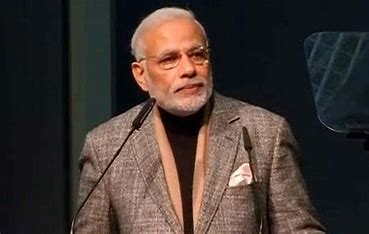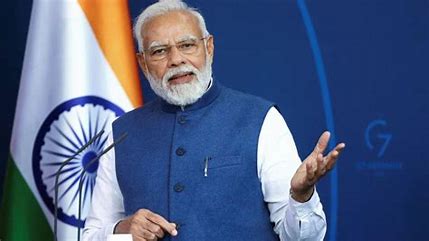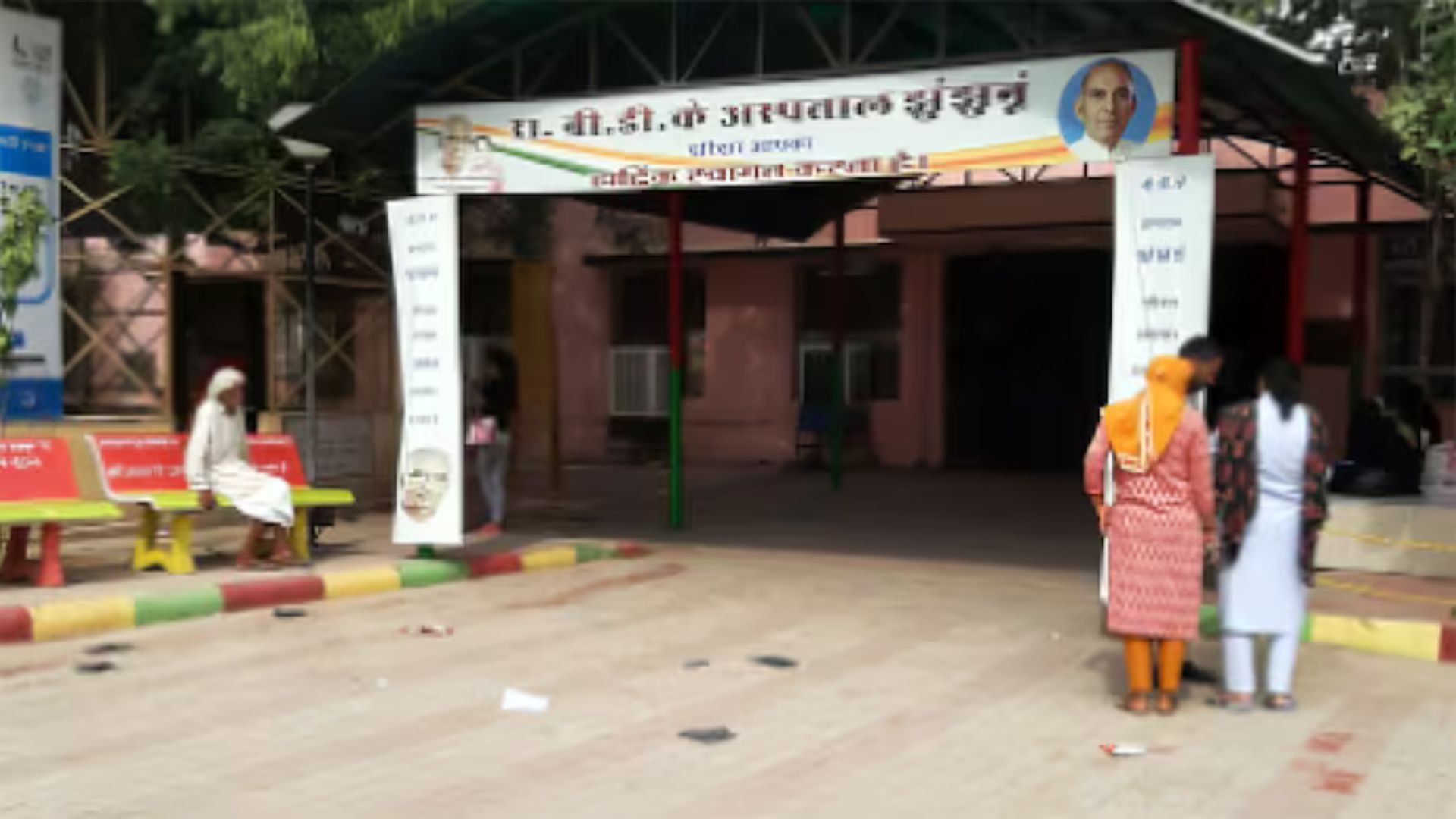
In a most significant turn of events, we saw how just recently on November 18, 2021, the Apex Court in Attorney General for India v. Satish and another in Criminal Appeal No. 1410 of 2021 (@ Special Leave Petition (CRL) No. 925 of 2021) and connected appeals, held that touching a child with sexual intent even through clothing is an offence of sexual assault under the Protection of Children from Sexual Offences (POCSO) Act thus setting aside two separate decisions of the Bombay High Court passed on January 15 and January 19 that made skin-to-skin physical contact a necessary condition to hold someone guilty of sexual assault. The Court directed the convicted persons top surrender within four weeks to undergo the remaining sentence of three years and five years awarded to them by a special POCSO court in 2020. It may be recalled that Attorney General KK Venugopal was the first to file an appeal against one of the High Court judgments in question. Later, we saw how the Maharashtra government followed by the National Commission for Women also filed appeals. Even the accused were represented in the case and the court appointed senior advocate Siddharth Dave to assist in the matter as amicus curiae.
While underscoring the detrimental effect of allowing such an interpretation, a Bench of Justice UU Lalit, Justice S Ravindra Bhat and Justice Bela M Trivedi said that, “Restricting the interpretation of the words “touch” or “physical contact” to “skin-to-skin contact” would not only be a narrow and pedantic interpretation of the provision contained in Section 7 of the POCSO Act, but it would lead to an absurd interpretation of the said provision.” Through two separate but concurring views, Justice Bela M Trivedi writing for herself and Justice UU Lalit and Justice S Ravindra Bhat traced the origin of the words “touch” and “physical contact” and noted that “skin-to-skin” contact was never intended to be incorporated by Parliament while enacting the POCSO Act in 2012.
To start with, it is first and foremost pointed out by the Bench in para 2 after granting leave as stated in para 1 that, “The four Appeals filed by the appellants – Attorney General for India, by the National Commission for Women, by the State of Maharashtra and by the appellant-accused Satish respectively, arising out of the Judgment and Order dated 19.01.2021 passed in Criminal Appeal No. 161 of 2020 by the High Court of Judicature at Bombay, Nagpur Bench, and the Appeal filed by the Appellant-State of Maharashtra, arising out of the Judgment and Order dated 15.01.2021 passed in the Criminal Appeal No. 445 of 2020 by the same Nagpur Bench, encompass similar contextual legal issues, and therefore, permit us this analogous adjudication.”
I. FACTUAL MATRIX IN CASE OF THE ACCUSED-SATISH
In hindsight, the Bench then recalls in para 3 that, “The Extra Joint Additional Sessions Judge, Nagpur (hereinafter referred to as the Special Court) vide the Judgment and Order dated 5th February, 2020 passed in the Special Child Protection Case No. 28/2017 convicted and sentenced the accused-Satish for the offences under Sections 342, 354 and 363 of the Indian Penal Code (for short ‘IPC’) and Section 8 of the Protection of Children from Sexual Offences Act, 2012 (For short POCSO Act). Being aggrieved by the same, the accused-Satish had preferred an appeal being Criminal Appeal No. 161 of 2020 in the High Court of Judicature at Bombay, Nagpur Bench. By the Judgment and Order dated 19th January, 2021, the High Court disposed of the said appeal by acquitting the accused for the offence under Section 8 of the POCSO Act, and convicting him for the offence under Sections 342 and 354 of the IPC. The accused was sentenced to undergo rigorous imprisonment for a period of one year and to pay fine of Rs. 500/- in default thereof to suffer R.I. for one month for the offence under Section 354 and to undergo imprisonment for a period of six months and to pay fine of Rs. 500/-, in default thereof to suffer R.I. for one month for the offence under Section 342 of IPC.”
To put things in perspective, the Bench then envisages in para 4 that, “The case of the prosecution before the Special Court as emerging from the record was that the informant happened to be the mother of the victim aged about 12 years. The accused-Satish was residing in the same area where she was residing i.e. Deepak Nagar, Nagpur. On 14.12.2016 at about 11.30 a.m., the victim had gone out to obtain guava. Since she did not return back for a long time, the informant-mother went in search of the victim. At that time, one lady Sau Divya Uikey who was staying nearby, told her that the neighbouring person (the accused) had taken her daughter along with him to his house. The informant, therefore, went to the house of the accused. The accused at that time came down from the first floor of his house. The informant having made inquiry about her daughter, the accused told her that she was not there in his house. The informant, however, barged into the house of the accused to search her daughter as she heard the shouts coming from a room situated on the first floor. She went to the first floor and found that the door of the room was bolted from outside. She opened the door and found her daughter who was crying in the room. On making inquiry as to what had happened, her daughter told her that the accused had asked her to come with him and told her that he would give her a guava. He took her to his house. He then pressed her breast and tried to remove her salwar. At that time, the victim tried to shout but the accused pressed her mouth. The accused thereafter left the room and bolted the door from outside. The informant, on having learnt such facts, went to the Police Station along with her daughter to lodge the complaint. The said complaint was registered as Crime No. 405/2016 at Police Station Gittikhadan, Nagpur. It was further case of the prosecution that when the police rushed to the spot, they saw that the accused was trying to commit suicide by hanging himself. He, therefore, was sent to the hospital for treatment. The spot panchanama was drawn and the statement of the victim was got recorded under Section 164 of Code of Criminal Procedure before the Magistrate. After the completion of the investigation, the charge-sheet was filed in the Special Court, Nagpur against the accused. The Special Court after appreciating the evidence on record, passed the Judgment and Order of conviction and sentence as stated hereinabove.”
Briefly stated, the Bench then recollects in para 5 that, “The High Court in the appeal filed by the accused-Satish acquitted the accused for the offence under Section 8 of the POCSO Act and convicted him for the minor offence under Sections 342 and 354 of IPC by making following observations:
“18 . Evidently, it is not the case of the prosecution that the appellant removed her top and pressed her breast. The punishment provided for offence of ‘sexual assault’ is imprisonment of either description for a term which shall not be less than three years but which may extend to five years, and shall also be liable to fine. Considering the stringent nature of punishment provided for the offence, in the opinion of this Court, stricter proof and serious allegations are required. The act of pressing of breast of the child aged 12 years, in the absence of any specific details as to whether the top was removed or whether he inserted his hand inside top and pressed her breast, would not fall in the definition of ‘sexual assault’. It would certainly fall within the definition of the offence under Section 354 of the Indian Penal Code.”
As a fallout, the Bench then reveals in para 6 that, “The above observations/findings made by the High Court, have caused the Attorney General for India, the National Commission for Women and the State of Maharashtra to file the appeals before this Court. The accused has also filed the appeal challenging his conviction for the offences under Section 354 and 342 of the IPC.”
Be it noted, the Bench then holds in para 40 that, “In the light of the afore-discussed legal position, if the findings recorded by the High Court are appreciated, it clearly emerges that the High Court fell into error in case of the accused-Satish in holding him guilty for the minor offences under Sections 342 and 354 of IPC and acquitting him for the offence under Section 8 of the POCSO Act. The High Court while specifically accepting the consistent versions of the victim and her mother i.e. informant about the accused having taken the victim to his house, having pressed the breast of the victim, having attempted to remove her salwar and pressing her mouth, had committed gross error in holding that the act of pressing of breast of the child aged 12 years in absence of any specific details as to whether the top was removed or whether he inserted his hands inside the top and pressed her breast, would not fall in the definition of sexual assault, and would fall within the definition of offence under Section 354 of the IPC. The High Court further erred in holding that there was no offence since there was no direct physical contact i.e. “skin to skin” with sexual intent.”
It cannot be glossed over that the Bench then observes in para 41 that, “The interpretation of Section 7 at the instance of the High Court on the premise of the principle of “ejusdem generis” is also thoroughly misconceived. It may be noted that the principle of “ejusdem generis” should be applied only as an aid to the construction of the statute. It should not be applied where it would defeat the very legislative intent. As per the settled legal position, if the specific words used in the section exhaust a class, it has to be construed that the legislative intent was to use the general word beyond the class denoted by the specific words. So far as Section 7 of the POCSO Act is concerned, the first part thereof exhausts a class of act of sexual assault using specific words, and the other part uses the general act beyond the class denoted by the specific words. In other words, whoever, with sexual intent touches the vagina, penis, anus or breast of the child or makes the child touch the vagina, penis, anus or breast of such person or any other person, would be committing an offence of “sexual assault”. Similarly, whoever does any other act with sexual intent which involves physical contact without penetration, would also be committing the offence of “sexual assault” under Section 7 of the POCSO Act. In view of the discussion made earlier, the prosecution was not required to prove a “skin to skin” contact for the purpose of proving the charge of sexual assault under Section 7 of the Act.”
Quite significantly, the Bench then holds in para 42 that, “The surrounding circumstances like the accused having taken the victim to his house, the accused having lied to the mother of the victim that the victim was not in his house, the mother having found her daughter in the room on the first floor of the house of the accused and the victim having narrated the incident to her mother, were proved by the prosecution, rather the said facts had remained unchallenged at the instance of the accused. Such basic facts having been proved by the prosecution, the Court was entitled to raise the statutory presumption about the culpable mental state of the accused as permitted to be raised under Section 30 of the said Act. The said presumption has not been rebutted by the accused, by proving that he had no such mental state. The allegation of sexual intent as contemplated under Section 7 of the Act, therefore, had also stood proved by the prosecution. The Court, therefore, is of the opinion that the prosecution had duly proved not only the sexual intent on the part of the accused but had also proved the alleged acts that he had pressed the breast of the victim, attempted to remove her salwar and had also exercised force by pressing her mouth. All these acts were the acts of “sexual assault” as contemplated under section 7, punishable under Section 8 of the POCSO Act.”
II. FACTUAL MATRIX IN THE CASE OF THE ACCUSED-LIBNUS
Of course, the Bench then lays bare in para 7 that, “The Additional Sessions Judge, Gadchiroli (hereinafter referred to as the Special Court) vide the judgment and order dated 5th October, 2020 passed in the Special POCSO case no. 07/2019 convicted and sentenced the accused-Libnus s/o Fransis Kujur for the offences punishable under Section 448 and 354-A (1)(i) of IPC and Sections 8 and 10 read with section 9 (m) and 12 of the POCSO Act. Being aggrieved by the same, the accused-Libnus had preferred an appeal being Criminal Appeal No. 445 of 2020 in the High Court of Judicature at Bombay, Nagpur Bench. Vide the Judgment and Order dated 15th January, 2021, the High Court maintained the conviction of the accused for the offences under Sections 448 and 354-A(1)(i) of the IPC read with Section 12 of the POCSO Act and set aside the conviction of the accused for the offences under Sections 8 and 10 of the POCSO Act. The High Court considering the nature of the alleged acts and the punishment provided for the alleged offences, modified the sentence imposed by the Special Court to the extent he had already undergone, and directed to set him free.”
In this context, it would be instructive to note that the Bench then mentions in para 43 that, “So far as the case of the other accused-Libnus is concerned, the High Court vide its impugned judgment and order, while maintaining the conviction of the accused for the offences punishable under sections 448 and 354-A(1)(i) of the IPC read with Section 12 of the POCSO Act, has acquitted the accused for the offence under Sections 8 and 10 of the POCSO Act. Pertinently the High Court while recording the finding that the prosecution had established that the accused had entered into the house of the prosecutrix with the intention to outrage her modesty, also held that the acts “holding the hands of the prosecutrix” or “opened the zip of the pant” did not fit in the definition of sexual assault. In the opinion of the Court, the High Court had fallen into a grave error in recording such findings. When the alleged acts of entering the house of the prosecutrix with sexual intent to outrage her modesty, of holding her hands and opening the zip of his pant showing his penis, are held to be established by the prosecution, there was no reason for the High Court not to treat such acts as the acts of “sexual assault” within the meaning of Section 7 of the POCSO Act. The High Court appears to have been swayed away by the minimum punishment of five years prescribed for the offence of “aggravated sexual assault” under Section 10 of the POCSO Act as the age of the prosecutrix was five years and the sexual assault if committed on the victim who is below 12 years is required to be treated as the “aggravated sexual assault” as per Section 9(m) of the Act. However, neither the term of minimum punishment nor the age of the victim could be a ground to allow the accused to escape from the clutches of Section 7 of the POCSO Act. The alleged acts of the accused in entering the house of the prosecutrix with sexual intent to outrage her modesty, holding her hands and unzipping his pant showing his penis to the prosecutrix having been held to be proved by the prosecution, they would certainly be the acts falling within the purview of the “sexual assault” as contemplated in the second part of Section 7 i.e. “……… or does any other act with sexual intent which involves physical contact without penetration”. The Court, therefore, has no hesitation in holding that the accused-Libnus had committed an offence of “sexual assault” within the meaning of Section 7 of the POCSO Act and the prosecutrix being below the age of 12 years, he had committed an offence of “aggravated sexual assault” as contemplated under Section 9(m) of the said Act, liable to be punished with the imprisonment for a term not less than five years under Section 10 of the POCSO Act. In that view of the matter, the judgment and order of the High Court insofar as it has set aside the conviction of the accused-Libnus for the offences under Section 8 and 10 of the POCSO Act is liable to be set aside, and the judgment and order of conviction and sentence passed by the Special Court is required to be restored.”
Order
As a corollary, the Bench then observes in para 44 that, “In the aforesaid premises, the judgments and orders dated 19.01.2021 and 15.01.2021 passed by the High Court of Judicature at Bombay, Nagpur Bench, at Nagpur in Criminal Appeal No. 161 of 2020 and Criminal Appeal No. 445 of 2020 respectively are hereby quashed and set aside; and the judgments and orders dated 05.02.2020 and 05.10.2020 passed by the Extra Joint Additional Sessions Judge, Nagpur in Special Child Protection Case No. 28 of 2017 and by the Special Court, Gadchiroli in POCSO Case No. 07/2019 are restored.”
It is worth noting that the Bench then holds in para 45 that, “Accordingly, the accused-Satish is hereby convicted for the offences punishable under Section 8 of the POCSO Act and under Sections 342, 354 and 363 of the IPC. He is directed to undergo rigorous imprisonment for a period of three years and to pay fine of Rs.500/- and in default thereof to suffer simple imprisonment for a period of one month for the offence under Section 8 of the POCSO Act. Since he has been sentenced for the major offence under Section 8 of the POCSO Act, no separate sentence is imposed upon him for the other offences under the IPC.”
What is also worth noting is that the Bench then also holds in para 46 that, “The accused-Libnus s/o Fransis Kujur is hereby convicted for the offences punishable under Sections 354-A (1)(i) and 448 of the IPC as also for the offences under Sections 8, 12 and 10 read with Section 9(m) of the POCSO Act. He is directed to undergo rigorous imprisonment for a period of five years for the offence under Section 10 of the POCSO Act and to pay fine of Rs. 25,000/- (Rupees twenty five thousand only) and in default thereof to suffer simple imprisonment for a period of six months. Since he has been sentenced for the major offence under Section 10 of the POCSO Act, no separate sentence is being imposed upon him for the other offences under the IPC and the POCSO Act.”
Furthermore, the Bench then directs in para 47 that, “Both accused – Satish and Libnus are directed to surrender themselves before the concerned Special Courts, within four weeks from today.”
It cannot be glossed over that the Bench then holds in para 48 that, “Before parting, it may be noted that in the case of the accused-Libnus, the State of Maharashtra while filing the Appeal before this Court had not produced the certified copy of the judgment of the High Court, however, had produced a copy of a certified copy, wherein the High Court had recorded acquittal of the accused for the offence under Sections 8, 10 and 12 of the POCSO Act, while maintaining his conviction under Sections 448 and 354-A(1)(i) of the IPC, whereas in the copy of the impugned judgment of the High Court downloaded by the respondent-accused produced on record by the learned Advocate for the accused, the High Court had recorded the conviction of the accused for the offence under Sections 448 and 354-A(1)(i) of the IPC read with Section 12 of the POCSO Act. There being a discrepancy in the said two copies of the impugned judgment of the High Court, the learned Advocate for the respondent-accused had filed an I.A. bringing to the notice of the Court about such discrepancy. The Court, therefore, had vide its order dated 27.10.2021 directed the Registrar of the High Court to send the certified copy of the decision of the High court dated 15.01.2021 passed in Criminal Appeal No. 445 of 2020. Accordingly, the Assistant Registrar of the High Court of Bombay, Nagpur Bench, has sent the certified copy of the said judgment.”
Most astonishing is what is then stated by the Bench in para 49 that, “It is very surprising to note that the Registry of High Court of Bombay, Nagpur Bench, has certified the copy of the impugned judgment by affixing the stamp on the back side of every page of the judgment which is blank. The said copy of the judgment appears to have been downloaded from the website and, therefore, does not bear even the signature or the name of the concerned judge at the end of the judgment. The certificate that the said copy is a true copy of the judgment, is also not written at the foot of the judgment as contemplated in Section 76 of the Indian Evidence Act. Such a practice, if followed by the Nagpur Bench of the Bombay High Court, may allow the miscreants to manipulate or commit mischief in the judicial orders which are used as the public documents having great significance in the judicial proceedings. The Registrar General of the Bombay High Court, therefore, is directed to look into the matter and ensure that proper procedure for preparing the certified copies of the judgments/orders of the Court in accordance with law is followed.”
It then notes in para 50 that, “All the five appeals stand disposed of accordingly.”
Finally, the Bench then holds in para 51 that, “It will be failure on our part if we do not extend gratitude of appreciation for the enormous assistance rendered by learned senior Advocate Siddhartha Dave, learned Amicus Curiae Siddharth Luthra, learned Senior Advocate appearing on behalf of the accused through Supreme Court Legal Services Committee, Ms Geeta Luthra, learned Senior Advocate appearing for National Women Commission and all other advocates who have appeared in the matter.
The initiative taken by the learned Attorney General for India Mr KK Venugopal in filing the appeal with all sense of expressing his concern in the cause also deserve to be appreciated.”
It must be mentioned that Justice Ravindra S Bhat in his separate but concurring judgment said that, “The reasoning in the High Court’s judgment quite insensitively trivializes – indeed legitimizes – an entire range of unacceptable behaviour which undermines a child’s dignity and autonomy, through unwanted intrusions.”
While cautioning Judges in interpreting provisions of the law, Justice Bhat said that, “It is no part of any Judge’s duty to strain the plain words of a statute, beyond recognition and to the point of its destruction, thereby denying the cry of the times that children desperately need the assurance of a law designed to protect their autonomy and dignity, as POCSO does.”
On a concluding note, it must be said that all the Judges must always strictly adhere to what the Apex Court three Judge Bench in this extremely commendable, cogent, courageous and convincing judgment has laid down so clearly. It is clearly laid down that skin-to-skin touch is not must to judge POCSO offence. What is essential is sexual intent. If sexual intent is there then that is sufficient to convict the accused! We thus see that the Apex Court has in this notable case decisively rejected the narrow interpretation of sexual assault against children and rightly held that unacceptable behavior cannot be trivialized. Very rightly so!
Sanjeev Sirohi, Advocate















